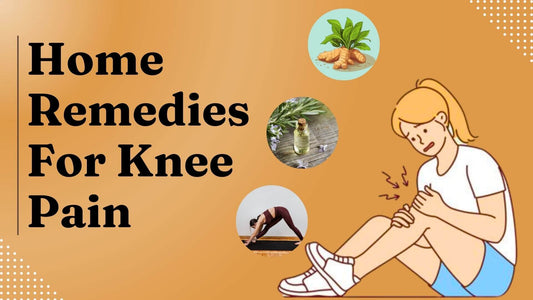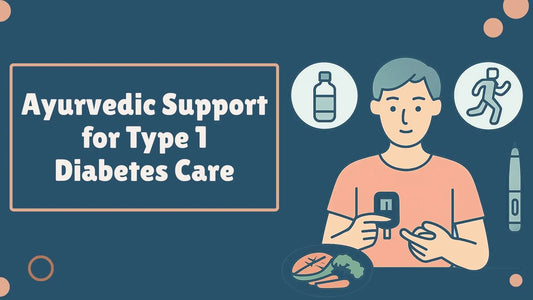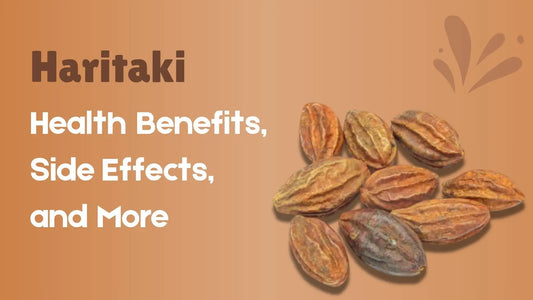
Get Relief with Knee Pain: Home Remedies, Exercises and Tips
Increasing age has a degenerative impact on the bones and joints by causing mobility difficulties.
Symptoms like inflammation, pain, stiffness, and swelling are experienced by those in the progressing ages of 50’s and 60's.
These symptoms make their lives miserable by causing hindrances to their regular actions or work. It also holds for knee joints.
Causes of Knee Pain
Some of the knee joint pain causes are:
- Arthritis: joint weakening due to inflammation and toxins.
- Injuries: fractures, torn ligaments, or dislocation.
- Strain: Activities like running or jumping.
- Synovial Fluid Inflammation: Pain and swelling near the bursa.
- Connective Tissue Damage: Tendonitis, Baker’s cysts, and iliotibial band issues.
Types of Knee Pain
- Arthritis: cartilage wear causing bone friction.
- Injuries: Ligament twists or damage.
- Tendonitis: Tendon overuse.
- Bursitis: inflammation in fluid sacs from pressure.
- Baker's Cyst: Pain behind the knee.
- Patellofemoral syndrome: inflammation in the kneecap.
- Iliotibial Band Syndrome: Pain from hip to thigh.
How Common is Knee Pain?
Knee pain is not only noticed among people in their progressive old age; it is affecting young adults, teenagers, and children as well.
Causes of knee pain in young adults can include a deficiency of calcium and vitamin D and a poor fiber diet. Knee pain following an injury or from regular vigorous exercise is another common complaint.
Home Remedies for Knee Pain
1. RICE
The goal of RICE is to treat knee pain and reverse other injuries.
- R: It suggests getting quality sleep and relaxation, which may stimulate the flow of blood in the affected joints and reduce any discomforting sensation.
- I: Using an ice pack, compression therapy is applied to the softer, swollen, and painful tissues.
- C: To relieve pain, swelling, and inflammatory sensations, cover the injured knee gently with an elastic band.
- E: Utilizing cushions or plush pillows for support, raise your knees above your heart for at least 48 to 72 hours to gain control over injury.
2. Massage Magic: Oils to Soothe Knee Pain
2.1 Dhurandhar Oil
Based on the principles of ayurvedic vapor therapy, Dhurandhar joint pain oil is a blend of several pain-relieving herbs that may reduce knee pain, swelling, and burning while enhancing lubrication and mobility.
2.2 Ortho Veda Oil
With the combination of herbs like nutgrass, til, licorice, wintergreen, and peppermint, orthoveda oil enhances synovial fluid and increases blood circulation and flexibility in the knee joints.
2.3 Mustard Oil
The traditional wisdom of Ayurveda also recommends massaging with mustard oil to reduce stiffness in the joints and calm down the surrounding discomforting conditions in the surrounding tissues and nerves.
2.4 Coconut Oil
Massaging the swollen and painful knee joints with coconut oil will activate the flow of blood and stimulate flexibility. Incorporating camphor may have a calming effect on joints and muscles.
3. Heat and Cold Therapy
Applying heat to the swollen and stiff knee with a heating pad, hot shower, or hot pad will stimulate blood circulation. It may reduce swelling and inflammation.
With the cold compress method, you can also bring control over any form of discomfort arising in your knee that may be dampening your mobility. Cover the ice pack with a towel or thin cloth to avoid burns or any form of damage.
4. Ayurvedic herbs: nature’s healing touch
4.1 Ginger
A few weeks of clinical study discovered that ginger was able to bring relief from chronic knee pain and reduce swelling along with boosting the immune system. It may be due to the presence of pain-relieving bioactive compounds in ginger.
4.2 Turmeric
A pinch of turmeric may have a positive impact on your painful knee. You may get the best results by adding it to a glass of milk. It might lessen joint pain or the effects of an injury.
4.3 Lemon
Lemons contain a high concentration of citric acid, which has significant effects on any infected area. It might lessen uric acid in the joints, which is a factor in discomfort and swelling.
4.4 Cayenne Pepper
The impact is caused by the presence of capsaicin, a natural painkiller in cayenne pepper, bringing relief from inflammation and discomfort in knee joints.
5. Epsom Salt: The Healing Soak
You might see some improvement in your swelling and painful knee joints after bathing your knees in the warm water added with Epsom salt. It may calm down the inflammation and lessen edema.
Such positive transformation with the flow of blood in the knee joints may come after 12 hours.
6. Exercise & Stretching: Keep Your Knees Moving
To work on bringing improvement in the flow of blood and flexibility in the joint, you must do light stretching of multiple muscles. As part of lifestyle changes to ease joint pain, incorporating these exercises regularly can make a big difference.
As an alternative, to increase muscle mobility in the various muscles, try performing a seated leg press with a weight machine. To ease knee pain, you can also perform restorative yoga by raising your heels or extending your legs one at a time.
Joint pain type can vary, so these exercises target multiple aspects of knee discomfort.
7. Footwear Fix: Pain-Relieving Shoes and Orthotics
Soft orthotics may not let you feel the effects of sores or inflammatory conditions existing in your knees, thighs, and lower back muscles.
The smooth, compressive body of these orthopedic shoes lessens the strain on the muscles in the legs. Such orthopedic wear may lessen your pain and strain.
Footwear with extra depth, adjustable insoles, straps, and laces may help arthritis patients with comfortable and pain-relieving movements.
8. Weight Management: Lighten the load
Overweight puts additional strain, discomfort, pain, and immobility on the knee.
Losing extra kilos by performing straight leg raises, side planks, side lying straight leg raises, or any other weight management exercise, you may find yourself relieved from excess knee pain or arthritis.
Techniques for managing your weight will encourage your knees to function and move, relieving you of concern for discomfort or swelling.
9. Dietary Changes: Feed Your Joints
Reducing salts, sugar, or anything prepared in the processed way or microwave oven may lower your struggle with painful knees.
Increasing fiber-rich and unrefined cereals and green leafy vegetables will nourish your joints. Avoid these foods for better management of arthritis or any kind of joint pain.
Select dairy products and eat those greens high in calcium. Remember to include ghee in your diet; it can help keep your joints lubricated better. Having broccoli, cauliflower, and mustard greens may reduce swelling in your knee joints.
10. Acupuncture: A Needle of Relief
By placing needles in the different locations surrounding your painful knee joints, acupuncture might bring relief from the inflammatory conditions and pain.
It may increase the flow of blood through the blood vessels and energy through the peripheral nerves. It may also improve knee momentum, improve flexibility, and lessen harmful and wasteful fluid retention.
Other Considerations for Joint Pain Relief
- Wearing a knee brace, which may reduce swelling.
- Reduce your intake of alcohol and tobacco; if you don't, these addictive substances may raise blood toxins and reduce bone density.
- Avoid sitting or standing for longer hours to prevent fluid from accumulating in the joints.
- While you may take painkillers for short-term relief, you should avoid using them long-term to avoid negative effects.
When to seek a doctor?
If, despite taking the recommended home remedies, the pain, swelling, or redness does not go away after a week, you should consult a doctor.
You must not wait for a single minute after you get injured at any joint or bone in your body.
The physician will make a diagnosis and arrange for the necessary care.
Conclusion
Joint pain may worsen with age, with unexpected injuries, and with a regular diet lacking in calcium and fiber.
Many people experience inflammatory conditions in their joints as a result of standing for extended periods or repeating movements.
Maintaining a healthy diet and using ayurvedic oils for bones can help manage knee joint pain and stiffness.
For those with arthritis or degenerative cartilage disorders affecting their knees, orthopedic shoes and slippers may improve balance and range of motion.
Further, any orthopedic specialist may guide you medically after diagnosing the conditions.

Dr. Pooja Verma
Dr. Pooja Verma is a sincere General Ayurvedic Physician who holds a BAMS degree with an interest in healing people holistically. She makes tailor-made treatment plans for a patient based on the blend of Ayurveda and modern science. She specializes in the treatment of diabetes, joint pains, arthritis, piles, and age-related mobility issues.



